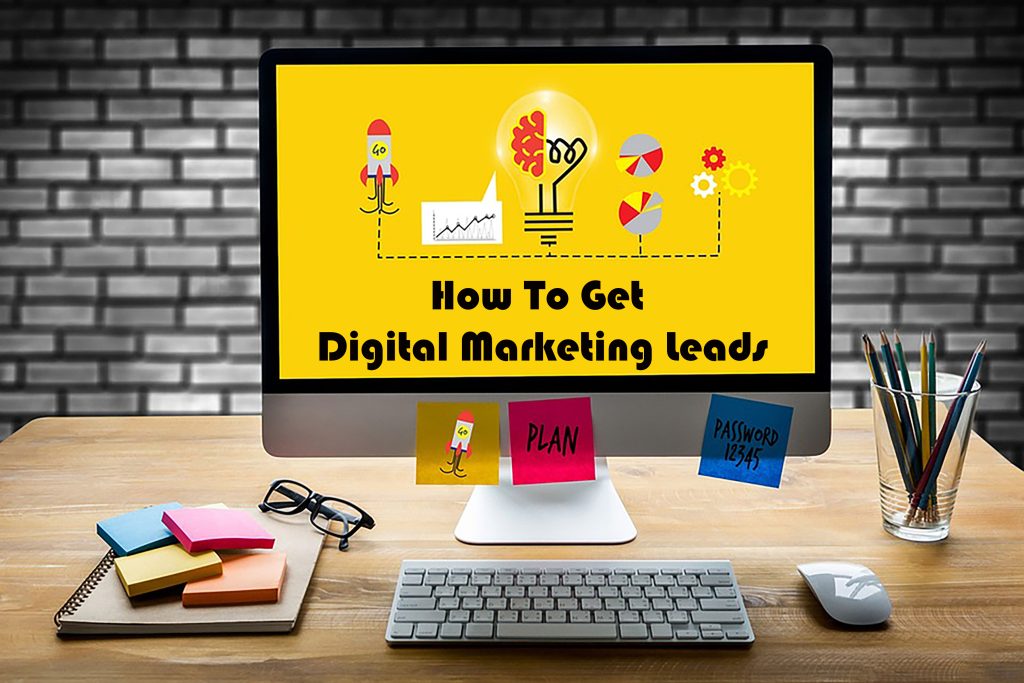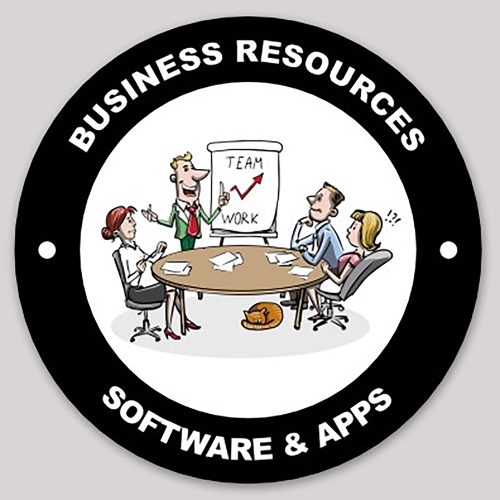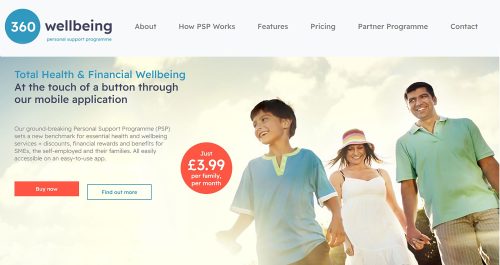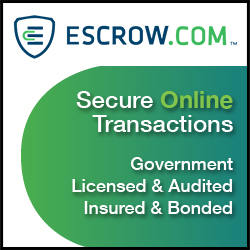
How To Get Digital Marketing Leads For Your Agency – A Comprehensive Guide.
Generating quality leads is crucial for the success of any digital marketing agency. With businesses increasingly relying on digital channels to reach their target audiences, agencies need to employ effective strategies to attract and convert leads. This article will provide you with a comprehensive guide on how to generate digital marketing leads for your agency, helping you establish a strong client base and drive business growth.
- Define your target audience: The first step in generating digital marketing leads is to clearly define your target audience. Identify the industry, size of business, demographics, and psychographics that align with your agency’s expertise. By understanding your ideal customer profile, you can tailor your marketing efforts to resonate with their needs and pain points.
- Optimize your online presence: A strong online presence is essential for attracting digital marketing leads. Optimize your website with relevant keywords, engaging content, and clear calls-to-action (CTAs) that prompt visitors to take action. Ensure your website is mobile-friendly, as an increasing number of users access the internet through mobile devices. Leverage search engine optimization (SEO) techniques to improve your website’s visibility in search engine results.
- Content marketing: Content marketing plays a vital role in lead generation. Create valuable, informative, and engaging content such as blog posts, articles, case studies, and ebooks that address your target audience’s pain points. Distribute your content through various channels, including your website, social media platforms, and email newsletters. Offer downloadable content in exchange for contact information to capture leads.
- Social media marketing: Utilize social media platforms to amplify your agency’s reach and attract leads. Identify the platforms where your target audience is most active and create compelling profiles. Share relevant content, engage with your audience, and participate in industry discussions to build credibility. Run targeted advertising campaigns on platforms like Facebook, Instagram, LinkedIn, and Twitter to reach a wider audience and drive traffic to your website.
- Email marketing: Email marketing remains a powerful tool for lead generation. Build an email list by offering valuable content or exclusive offers. Segment your list based on various criteria such as demographics, interests, or previous interactions. Personalize your emails and send targeted messages that resonate with each segment. Include compelling CTAs and track email metrics to optimize your campaigns.
- Search engine marketing (SEM): Pay-per-click (PPC) advertising through search engines like Google can be an effective way to generate leads quickly. Conduct keyword research to identify relevant keywords with high search volumes and low competition. Create compelling ad copy and landing pages that align with your target audience’s intent. Constantly monitor and optimize your campaigns to maximize conversions.
- Influencer marketing and partnerships: Collaborating with influential figures or complementary businesses can help expand your reach and attract new leads. Identify thought leaders, industry influencers, or relevant brands who can endorse your agency. Guest blogging, joint webinars, or co-created content can expose your agency to a wider audience and generate quality leads through referrals.
- Networking and referrals: Establishing strong relationships with existing clients and industry professionals is invaluable for lead generation. Attend industry events, join relevant online communities, and actively participate in discussions. Leverage your network to ask for referrals and recommendations. Encourage satisfied clients to leave reviews and testimonials that showcase your agency’s expertise.
How to Define Your Target Audience:
Defining your target audience is a crucial step in any marketing or communication strategy. Understanding who your audience is allows you to tailor your message, products, and services to their specific needs and preferences. By identifying and targeting the right audience, you can maximize your efforts, increase engagement, and achieve better results. In this article, we will provide a comprehensive guide on how to define your target audience effectively.
- Research and Analyze Your Existing Customer Base: Start by examining your current customer base. Analyze their demographics, such as age, gender, location, and income level. Look for patterns and trends to identify common characteristics among your most loyal or profitable customers. This information will provide a solid foundation for defining your target audience.
- Conduct Market Research: Expand your understanding of your target audience by conducting market research. Use surveys, interviews, and focus groups to gather insights about potential customers’ interests, preferences, pain points, and behaviors. This data will help you refine your audience profile and create more accurate buyer personas.
- Create Buyer Personas: Buyer personas are fictional representations of your ideal customers. Based on the research conducted, develop detailed profiles that include demographic information, motivations, goals, challenges, and purchasing habits. Consider factors such as age, occupation, education, values, hobbies, and preferred communication channels. These personas will serve as reference points when crafting marketing messages and strategies.
- Identify Needs and Pain Points: To effectively target your audience, you need to understand their needs and pain points. Determine the problems your product or service solves and how it benefits your customers. By aligning your offerings with their specific challenges, you can position yourself as the solution they seek.
- Analyze Competitors: Study your competitors and their customer base. Identify gaps or niches in the market that your competitors might be overlooking. Look for underserved segments or unique selling propositions that can differentiate your business from the competition. This analysis will help you identify opportunities to target a specific audience more effectively.
- Utilize Social Media Insights: Leverage social media analytics to gain valuable insights about your audience. Platforms like Facebook, Twitter, and Instagram provide detailed demographics, interests, and engagement metrics. Analyzing this data can help you understand your audience’s online behavior, content preferences, and communication style.
- Test and Refine: Defining your target audience is an ongoing process. Continuously test and refine your audience profiles and strategies based on data-driven insights and feedback. Monitor engagement metrics, conversion rates, and customer feedback to gauge the effectiveness of your targeting efforts. Adapt your approach accordingly to optimize results.
Defining your target audience is a critical step in any successful marketing strategy. By understanding your audience’s demographics, needs, preferences, and behaviors, you can create compelling messages, tailor your offerings, and reach the right people at the right time. Investing time and effort in defining your target audience will not only improve your marketing efforts but also enhance customer satisfaction and drive business growth. Stay attuned to the ever-evolving needs and preferences of your audience and adjust your strategies accordingly for continued success.
Maximizing Your Online Presence: Strategies for Optimal Optimization
Having a strong online presence is crucial for individuals and businesses alike. Whether you’re an entrepreneur, a professional seeking career growth, or an artist showcasing your work, optimizing your online presence can significantly boost your visibility, credibility, and opportunities. In this article, we will explore effective strategies to optimize your online presence and make the most out of the digital landscape.
- Define your goals: Before diving into optimizing your online presence, it’s essential to define your goals. Are you looking to build a personal brand, promote your business, or establish yourself as an industry expert? Clarifying your objectives will help you tailor your online presence to align with your desired outcomes.
- Craft a compelling personal brand: Your personal brand is how you present yourself to the online world. Start by identifying your unique strengths, values, and passions. Develop a consistent and authentic brand identity across your website, social media profiles, and content. Use a professional headshot, create a memorable bio, and ensure your branding elements (such as logos or color schemes) remain consistent.
- Build an optimized website or portfolio: A well-designed website or portfolio is the cornerstone of your online presence. Ensure that your site is visually appealing, easy to navigate, and optimized for search engines (SEO). Use relevant keywords in your content, provide clear descriptions, and include high-quality visuals or multimedia elements. Additionally, make sure your website is mobile-friendly, as an increasing number of users browse the internet using smartphones and tablets.
- Leverage social media platforms: Social media platforms are powerful tools for expanding your online reach. Identify the platforms where your target audience is most active, and create compelling profiles on those platforms. Regularly post relevant content, engage with your audience, and join conversations in your industry. Use analytics tools to track your performance and adjust your strategy accordingly.
- Produce valuable content: Content creation is a vital aspect of optimizing your online presence. Develop a content strategy that aligns with your goals and target audience. Create blog posts, articles, videos, podcasts, or infographics that provide value to your audience. Share your expertise, provide insights, and address common challenges or questions. Consistency and quality are key to building trust and credibility.
- Engage with your audience: Building meaningful connections with your audience is crucial for optimizing your online presence. Respond promptly to comments, messages, and inquiries. Encourage discussions, ask for feedback, and provide valuable insights. Actively participate in relevant online communities and industry forums, establishing yourself as a thought leader.
- Collaborate with influencers and thought leaders: Partnering with influencers or thought leaders in your industry can significantly amplify your online presence. Identify individuals or organizations whose values align with yours and whose audience overlaps with yours. Collaborate on content, guest blog on each other’s platforms, or participate in joint events or webinars. This can help you tap into their existing audience and gain credibility.
- Monitor your online presence: Regularly monitor your online presence to track your progress and reputation. Set up Google Alerts to receive notifications when your name or brand is mentioned online. Monitor social media mentions and reviews. Respond to feedback and address any negative comments or reviews promptly and professionally.
Optimizing your online presence is a continuous process that requires consistent effort and adaptation. By defining your goals, building a compelling personal brand, creating valuable content, and engaging with your audience, you can enhance your visibility, credibility, and opportunities in the digital landscape. Remember, an optimized online presence is a powerful tool that can open doors, forge connections, and propel you toward success.
Unleashing the Power of Content Marketing: Engaging Audiences and Driving Results
Introntent marketing has emerged as a strategic approach that enables businesses to connect with their target audience, build relationships, and achieve their marketing objectives. Content marketing revolves around the creation, distribution, and promotion of valuable, relevant, and engaging content to attract and retain a clearly defined audience. This article delves into the essence of content marketing, its significance, and how businesses can harness its power to drive success.
Content marketing can be defined as a strategic marketing technique that involves creating and sharing valuable, informative, and compelling content with the aim of engaging and attracting a specific target audience. Unlike traditional advertising, content marketing does not solely focus on overtly promoting a product or service. Instead, it aims to provide value to the audience by offering useful information, entertainment, or education, thereby establishing trust and credibility.
Key Elements of Content Marketing:
- Audience-Centric Approach: Content marketing starts with a deep understanding of the target audience. By identifying their needs, interests, and pain points, businesses can develop content that resonates with their audience, establishing a meaningful connection.
- Valuable and Relevant Content: Successful content marketing hinges on the creation of content that provides value to the audience. Whether it’s through informative blog posts, engaging videos, or insightful infographics, content must address the audience’s challenges and offer practical solutions or fresh perspectives.
- Storytelling and Emotional Appeal: Stories have a powerful impact on human emotions. Effective content marketing incorporates storytelling techniques to captivate the audience, evoke emotions, and create a lasting impression. By crafting narratives that connect with the audience’s aspirations, challenges, or dreams, brands can establish a stronger bond.
- Multi-Channel Distribution: Content should be distributed across various platforms to reach a wider audience. This includes websites, social media platforms, email newsletters, podcasts, and more. By adopting a multi-channel approach, businesses can amplify their reach and engage with users through their preferred mediums.
- Consistency and Persistence: Content marketing is a long-term strategy that requires consistent effort and persistence. Regularly publishing high-quality content helps build trust, establishes credibility, and reinforces a brand’s position as an industry authority.
Benefits of Content Marketing:
- Increased Brand Awareness: By consistently delivering valuable content, businesses can raise brand awareness and visibility. Engaging content that resonates with the audience has the potential to be shared, thereby expanding the brand’s reach and attracting new customers.
- Enhanced Audience Engagement: Content marketing provides an opportunity to actively engage with the target audience. Through comments, shares, and discussions, businesses can foster meaningful conversations, build relationships, and gain valuable insights into their customers’ preferences.
- Improved Search Engine Visibility: Search engines prioritize high-quality, relevant content. By regularly publishing optimized content, businesses can improve their search engine rankings, increase organic traffic, and reach potential customers who are actively searching for related information.
- Establishing Thought Leadership: Consistently delivering valuable content positions businesses as industry, thought leaders. By sharing expert insights, research, and unique perspectives, brands can gain credibility, and trust, and become go-to sources of information in their respective fields.
- Higher Conversion Rates: When content is tailored to address the audience’s needs, it can drive higher conversion rates. By nurturing leads with valuable content throughout the customer journey, businesses can build trust, establish credibility, and influence purchase decisions.
Content marketing has revolutionized the way businesses engage with their target audience. By leveraging the power of valuable and relevant content, businesses can attract, engage, and build long-term relationships with customers. Content marketing offers a unique opportunity to connect on a deeper level, establish brand loyalty, and drive measurable results. By understanding the core principles and investing in consistent and high-quality content creation, businesses can unlock the full potential of content marketing and thrive in the digital landscape.
Social Media Marketing
Social media has transformed the way we connect, communicate, and consume information. It has become an integral part of our daily lives, and businesses have quickly recognized its immense potential. Social media marketing has emerged as a game-changer, enabling businesses to reach and engage with their target audience like never before. This article explores the world of social media marketing, its benefits, and essential strategies for success.
Social media platforms have experienced exponential growth, with billions of users actively engaging on platforms such as Facebook, Instagram, Twitter, LinkedIn, and YouTube. This vast user base presents a vast opportunity for businesses to amplify their brand visibility, increase customer engagement, and drive sales. Here are some key reasons why social media marketing is a must for businesses:
- Wide Reach: Social media platforms allow businesses to connect with a global audience. They offer targeted advertising tools that enable precise audience segmentation based on demographics, interests, and behaviors, ensuring that your message reaches the right people.
- Brand Awareness and Visibility: By establishing a strong social media presence, businesses can build brand awareness and visibility. Regularly sharing valuable content and engaging with followers increases brand recognition, making it easier for potential customers to find and remember your business.
- Customer Engagement: Social media facilitates direct and real-time interaction with your audience. Through comments, likes, and shares, businesses can engage in meaningful conversations, gather feedback, and provide customer support. This fosters brand loyalty and helps build long-term relationships with customers.
- Enhanced Targeting and Personalization: Social media platforms collect a wealth of user data, allowing businesses to target specific audience segments with precision. This enables personalized marketing campaigns tailored to individual preferences, leading to higher conversion rates and customer satisfaction.
- Cost-Effective Advertising: Compared to traditional marketing channels, social media advertising is often more cost-effective. Platforms offer various advertising options, including pay-per-click, sponsored content, and influencer collaborations, allowing businesses of all sizes to leverage their marketing budgets efficiently.
Essential Strategies for Social Media Marketing Success
To make the most of social media marketing, businesses must adopt effective strategies tailored to their goals and target audience. Here are some key strategies for success:
- Define Clear Goals: Start by identifying your social media marketing objectives. Whether it’s increasing brand awareness, driving website traffic, generating leads, or boosting sales, clear goals will guide your strategy and measurement of success.
- Understand Your Audience: Conduct thorough market research to gain insights into your target audience’s demographics, interests, and preferences. This knowledge will help you tailor your content and messaging to resonate with your audience effectively.
- Consistent Branding: Establish a consistent brand identity across all social media platforms. Use cohesive visuals, such as logos, colors, and fonts, to ensure your brand is easily recognizable and memorable.
- Content Strategy: Develop a content strategy that aligns with your goals and resonates with your audience. Create high-quality and engaging content that provides value, such as informative blog posts, visually appealing images, videos, and interactive polls.
- Two-Way Communication: Social media is not just a broadcasting platform; it’s an opportunity for dialogue. Respond promptly to comments, messages, and mentions, and actively engage with your audience. Encourage discussions, ask questions, and listen to feedback.
- Influencer Marketing: Collaborate with influencers or thought leaders in your industry to expand your reach and credibility. Partnering with relevant influencers can help you tap into their established audience and increase brand visibility.
- Analytics and Optimization: Regularly track and analyze your social media performance using analytics tools. Gain insights into what content performs well, and which platforms drive the most engagement, and adjust your strategy accordingly to maximize results.
Social media marketing has revolutionized the way businesses connect with their target audience. By leveraging the power of social media platforms, businesses can enhance brand awareness, engage customers, and drive business growth. However, success in social media marketing requires careful planning, consistent efforts, and a deep understanding of your audience. By adopting effective strategies and staying up-to-date with the ever-evolving social media landscape, businesses can harness the true potential of social media marketing and stay ahead in today’s competitive digital marketplace.
Email Marketing
Email marketing remains a potent tool for businesses to connect with their audience, foster customer relationships, and drive sales. While some may consider it an old-fashioned marketing approach, the reality is that email marketing continues to evolve and adapt to the changing landscape of the digital world. In this comprehensive guide, we will explore the fundamentals of email marketing, strategies for success, and best practices to maximize your campaign’s effectiveness.
- Understanding the Foundations of Email Marketing: Email marketing involves the use of emails to communicate with potential and existing customers. By leveraging subscriber lists, businesses can send targeted messages, promotional offers, newsletters, and more directly to individuals’ inboxes. This direct line of communication provides a unique opportunity to engage with customers on a personal level.
- Building an Effective Email Marketing Campaign: a. Define Your Objectives: Clearly outline the goals you want to achieve through your email marketing campaign, such as increasing sales, boosting brand awareness, or driving website traffic. b. Segmentation and Targeting: Segment your subscriber list based on relevant criteria like demographics, past purchase behavior, or engagement level. Targeted emails yield higher open rates and conversion rates. c. Compelling Content Creation: Craft engaging and personalized content that resonates with your audience. This includes attention-grabbing subject lines, valuable information, persuasive calls to action, and visually appealing designs. d. Responsive Design: Optimize your emails for various devices and screen sizes. Mobile compatibility is crucial, as a significant portion of recipients access emails on their smartphones or tablets. e. A/B Testing: Experiment with different elements of your emails, such as subject lines, images, layouts, and CTAs, to identify the most effective combinations that drive higher engagement and conversions. f. Automation and Personalization: Implement automated email workflows triggered by specific actions or events, such as welcome emails, abandoned cart reminders, or birthday greetings. Use personalization techniques to make your emails more relevant and tailored to individual recipients.
- Compliance with Email Marketing Regulations: a. Permission-based Marketing: Ensure you have proper consent from recipients before sending them commercial emails. Implement a double opt-in process to verify subscribers’ intent to join your email list. b. CAN-SPAM Act and GDPR: Familiarize yourself with the email marketing regulations in your region. Adhere to guidelines such as providing clear unsubscribe options, including your business’s physical address, and respecting subscribers’ privacy rights.
- Email Deliverability and Performance Tracking: a. Sender Reputation: Maintain a good sender reputation by following email best practices, using authenticated domains, and monitoring bounce rates and spam complaints. b. Deliverability Optimization: Craft compelling subject lines, use reputable email service providers, avoid spam triggers, and regularly clean your subscriber list to enhance email deliverability. c. Performance Metrics: Track and analyze key metrics like open rates, click-through rates (CTRs), conversion rates, and overall ROI. Utilize these insights to refine your email marketing strategies continually.
- Staying Ahead with Email Marketing Trends: a. Personalization and Hyper-segmentation: Embrace advanced personalization techniques, such as dynamic content and predictive analytics, to create highly targeted and individualized email experiences. b. Interactive Emails: Incorporate interactive elements like polls, quizzes, GIFs, and videos to increase engagement and provide a more immersive experience. c. Artificial Intelligence and Automation: Leverage AI-powered tools and automation to streamline your email marketing efforts, from personalized recommendations to automated campaign optimization. d. User-generated Content: Encourage subscribers to contribute content such as reviews, testimonials, or user-generated images, fostering authenticity and building trust among your audience.
Email marketing remains a cornerstone of digital marketing strategies due to its effectiveness, affordability, and direct reach. By understanding the foundations, implementing best practices, complying with regulations, and adapting to emerging trends, businesses can unlock the full potential of email marketing to nurture customer relationships, drive conversions, and achieve their marketing objectives. As technology continues to evolve, email marketing will undoubtedly remain a powerful tool for businesses to connect with their audience in meaningful ways.
Search Engine Marketing (SEM)
Search engine marketing plays a pivotal role in connecting businesses with potential customers. To thrive in this competitive landscape, companies need to employ effective marketing strategies that drive targeted traffic to their websites. One such strategy is Search Engine Marketing (SEM), a powerful tool that helps businesses boost their online visibility, increase brand awareness, and drive conversions. In this article, we will explore the fundamentals of SEM, its key components, and why it is essential for businesses of all sizes.
Understanding Search Engine Marketing (SEM)
Search Engine Marketing (SEM) encompasses a range of techniques and strategies used to improve a website’s visibility in search engine results pages (SERPs). Unlike search engine optimization (SEO), which focuses on organic methods to improve website ranking, SEM involves paid advertising to achieve higher visibility.
Key Components of SEM
- Pay-Per-Click (PPC) Advertising: PPC is the most common form of SEM, where advertisers bid on keywords relevant to their business. These ads are displayed at the top or bottom of the SERPs, and advertisers only pay when a user clicks on their ad. Google Ads and Bing Ads are popular PPC advertising platforms.
- Keyword Research: Effective keyword research is crucial for SEM success. It involves identifying relevant keywords and phrases that potential customers are likely to use when searching for products or services. By targeting the right keywords, businesses can optimize their ad campaigns and reach their desired audience.
- Ad Copy Creation: Compelling and concise ad copies are essential to capture users’ attention. Advertisers need to craft engaging headlines, clear descriptions, and persuasive calls to action to entice users to click on their ads.
- Landing Page Optimization: Once users click on an ad, they should be directed to a well-optimized landing page that aligns with their search intent. Landing pages should be user-friendly, provide relevant information, and have clear conversion paths to maximize the chances of conversion.
- Ad Campaign Management: Effective SEM requires ongoing monitoring, testing, and optimization of ad campaigns. Advertisers need to analyze data, measure campaign performance, and make adjustments to ensure optimal results. Split testing different ad variations, adjusting bids, and refining targeting options are some strategies employed during campaign management.
Benefits of SEM
- Increased Online Visibility: SEM allows businesses to appear prominently in search engine results, even above organic results. This increased visibility helps businesses gain exposure, establish brand authority, and generate website traffic.
- Targeted Advertising: SEM enables businesses to target specific keywords and demographics, ensuring their ads reach the most relevant audience. This targeting capability helps maximize return on investment (ROI) by focusing on users who are more likely to convert.
- Immediate Results: Unlike organic SEO efforts that take time to yield results, SEM can deliver immediate visibility and traffic. Advertisers can set up campaigns quickly and start driving traffic to their websites almost instantly.
- Measurable ROI: SEM provides detailed data and analytics, allowing advertisers to measure the effectiveness of their campaigns. They can track clicks, impressions, conversions, and other key metrics to evaluate ROI and make data-driven decisions.
- Cost Control: SEM offers flexible budgeting options, allowing advertisers to set daily or monthly spending limits. This feature ensures that businesses have control over their advertising expenses and can adjust their budgets based on performance.
Search Engine Marketing (SEM) is a dynamic and effective approach to boost online visibility, drive targeted traffic, and increase conversions. By leveraging the power of paid advertising, businesses can achieve rapid results, precisely target their audience, and measure the success of their campaigns. As the digital landscape continues to evolve, SEM remains a critical component of a comprehensive marketing strategy, enabling businesses to thrive in the competitive online marketplace.
Influencer Marketing & Partnerships
The Powerful Benefits of Influencer Marketing and Partnerships
Traditional advertising methods alone no longer hold the same sway over consumers as they once did. As the digital landscape continues to evolve, influencer marketing and partnerships have emerged as a game-changing strategy for businesses worldwide. Leveraging the power of influential personalities, brands can tap into their authenticity, reach, and engagement to drive their marketing efforts to new heights. In this article, we will delve into the myriad benefits of influencer marketing and partnerships and explore how they can revolutionize your brand’s growth.
- Enhanced Reach and Targeted Audiences: Influencers possess a dedicated and loyal following within specific niches, enabling businesses to tap into highly targeted audiences. Collaborating with influencers allows brands to gain access to a pool of engaged followers who are genuinely interested in their niche. By leveraging influencers’ reach, brands can amplify their message, exponentially expanding their online visibility and increasing their chances of connecting with potential customers. This targeted approach also helps ensure that the brand’s marketing efforts are directed toward individuals who are more likely to convert into loyal customers.
- Trust and Authenticity: Influencers build strong relationships with their followers based on trust and authenticity. They have spent considerable time nurturing their online presence, establishing credibility, and engaging with their audience. Partnering with influencers helps brands tap into this established trust, effectively borrowing the influencer’s credibility and authenticity. When an influencer recommends a product or service, their followers perceive it as a genuine endorsement rather than a blatant advertisement, resulting in a higher level of trust and receptiveness. This trust factor can significantly influence consumers’ purchasing decisions, as they are more likely to be receptive to recommendations from someone they admire and trust.
- Increased Engagement and Brand Awareness: One of the most significant advantages of influencer marketing is its ability to drive higher engagement rates. Influencers possess a deep understanding of their audience’s preferences, which allows them to create content that resonates with their followers. When influencers endorse a brand, their audience is more likely to actively engage with the content, resulting in increased likes, shares, comments, and ultimately, improved brand awareness. The ripple effect of such engagement can help a brand reach new audiences, as followers share the content with their own networks, further expanding the brand’s reach.
- Cost-Effective and Measurable ROI: Compared to traditional forms of advertising, influencer marketing can offer a cost-effective solution for businesses, particularly those with limited marketing budgets. Collaborating with influencers can be more affordable than traditional advertising channels, such as television or print media. Additionally, influencer partnerships often come with measurable results. Brands can track key performance indicators (KPIs) such as website traffic, click-through rates, conversion rates, and social media engagement to gauge the effectiveness of their influencer campaigns. This data-driven approach allows brands to optimize their strategies and allocate resources more efficiently, ultimately generating a higher return on investment (ROI).
- Content Creation and Authentic Storytelling: Influencers are skilled content creators who understand how to captivate and engage their audience. By collaborating with influencers, brands gain access to their creativity and storytelling abilities. Influencers can develop unique and compelling content around a brand, showcasing products or services in an authentic and relatable manner. This partnership helps brands tap into the influencer’s expertise in crafting engaging narratives, ensuring that the brand’s message resonates with the target audience.
Influencer marketing and partnerships have emerged as powerful tools in the modern marketing landscape, offering a host of benefits to businesses. From enhanced reach and targeted audiences to trust, authenticity, and increased engagement, influencers can propel a brand’s growth to new heights. With the ability to provide a cost-effective solution and measurable ROI, influencer marketing allows brands to optimize their marketing efforts, effectively connecting with their target audience. By leveraging the storytelling capabilities of influencers, brands can foster a genuine connection with consumers and create a lasting impact in an increasingly competitive market. Embracing the power of influencer marketing and partnerships can unlock tremendous success for businesses, revolutionizing their growth trajectory in the digital age.
Networking and Referrals
The Power of Networking and Referrals: Unlocking Opportunities and Building Meaningful Connections
Networking and referrals have become indispensable tools in our interconnected world for personal and professional growth. The ability to forge meaningful connections and leverage existing relationships has the potential to unlock a vast array of opportunities. Whether you’re an entrepreneur, a job seeker, or a professional looking to expand your horizons, understanding the power of networking and referrals can propel you toward success. In this article, we explore the significance of networking, the benefits of referrals, and practical tips to harness their potential.
The Significance of Networking: Networking is the art of building and nurturing relationships with individuals who share common interests, goals, or professional pursuits. It serves as a catalyst for career advancement and personal growth. When you engage in networking activities, you position yourself at the center of a web of connections, enabling you to tap into a diverse range of resources, information, and opportunities.
Networking not only allows you to exchange knowledge and experiences with like-minded individuals but also helps you expand your social capital. By surrounding yourself with a diverse group of people, you gain access to different perspectives, ideas, and expertise, which can stimulate innovation and problem-solving.
The Benefits of Referrals:
Referrals, on the other hand, are recommendations or endorsements from individuals who have had positive experiences with your work or services. They serve as a powerful endorsement of your capabilities and can significantly impact your professional trajectory. Here are some key benefits of referrals:
- Credibility and Trust: Referrals come with built-in credibility. When someone recommends you or your business, they vouch for your competence and trustworthiness. This endorsement helps establish a strong foundation of credibility, making it easier to gain the trust of potential clients, partners, or employers.
- Enhanced Opportunities: Referrals can open doors to new opportunities that might not have been accessible otherwise. People are more likely to engage with individuals or businesses that come highly recommended. Referrals can lead to new clients, job offers, partnerships, collaborations, and even mentorship opportunities.
- Efficiency and Cost-effectiveness: Referrals can save time, effort, and money in the process of acquiring new clients or seeking employment. When a referral introduces you, there is already a level of trust established, reducing the need for extensive marketing or recruitment efforts.
Harnessing the Power of Networking and Referrals:
- Build Genuine Relationships: Authenticity is key when it comes to networking and referrals. Focus on building genuine relationships based on shared interests, mutual respect, and trust. Networking events, conferences, online communities, and professional associations are excellent avenues to connect with like-minded individuals.
- Offer Value and Support: Networking should not be solely transactional. Look for ways to add value and support others without expecting immediate returns. Offer your expertise, advice, or assistance whenever possible. By being a valuable resource to others, you’ll naturally attract referrals and build a reputation as a reliable professional.
- Cultivate Your Online Presence: In today’s digital age, having a strong online presence is crucial for networking and referrals. Maintain an updated and professional LinkedIn profile, engage in industry-specific online forums or communities, and share valuable content to establish yourself as an authority in your field.
- Leverage Existing Connections: Tap into your existing network to seek referrals. Reach out to former colleagues, mentors, clients, or friends who can vouch for your abilities. Let them know about your goals and aspirations, and they may be more inclined to refer you to relevant opportunities.
Networking and referrals are not just buzzwords; they are powerful tools that can help you unlock a world of possibilities. By building meaningful connections, nurturing relationships, and leveraging referrals, you can expand your professional network, open doors to new opportunities, and establish yourself as a trusted professional. Embrace the art of networking, offer support to others, and harness the potential of referrals to create a path toward long-term success. Remember, your network is not just a collection of contacts, but a valuable community that can support and propel your journey forward.
Conclusion:
Generating digital marketing leads for your agency requires a combination of strategic planning, online optimization, content creation, and effective marketing techniques. By defining your target audience, optimizing your online presence, and utilizing various channels such as content marketing, social media, email marketing, SEM, influencer marketing, and networking, you can attract high-quality leads and drive business growth. Stay adaptable, track your results, and refine your strategies to consistently generate a steady stream of digital marketing leads for your agency.
Further Reading
ADVERTISEMENT

#leadgeneration #digitalmarketingagency #digitalmarketing #targetaudience #contentmarketing #onlinepresence #socialmediamarketing #emailmarketing #sem #searchenginemarketing #influencermarketing #partnerships #networking #referrals










